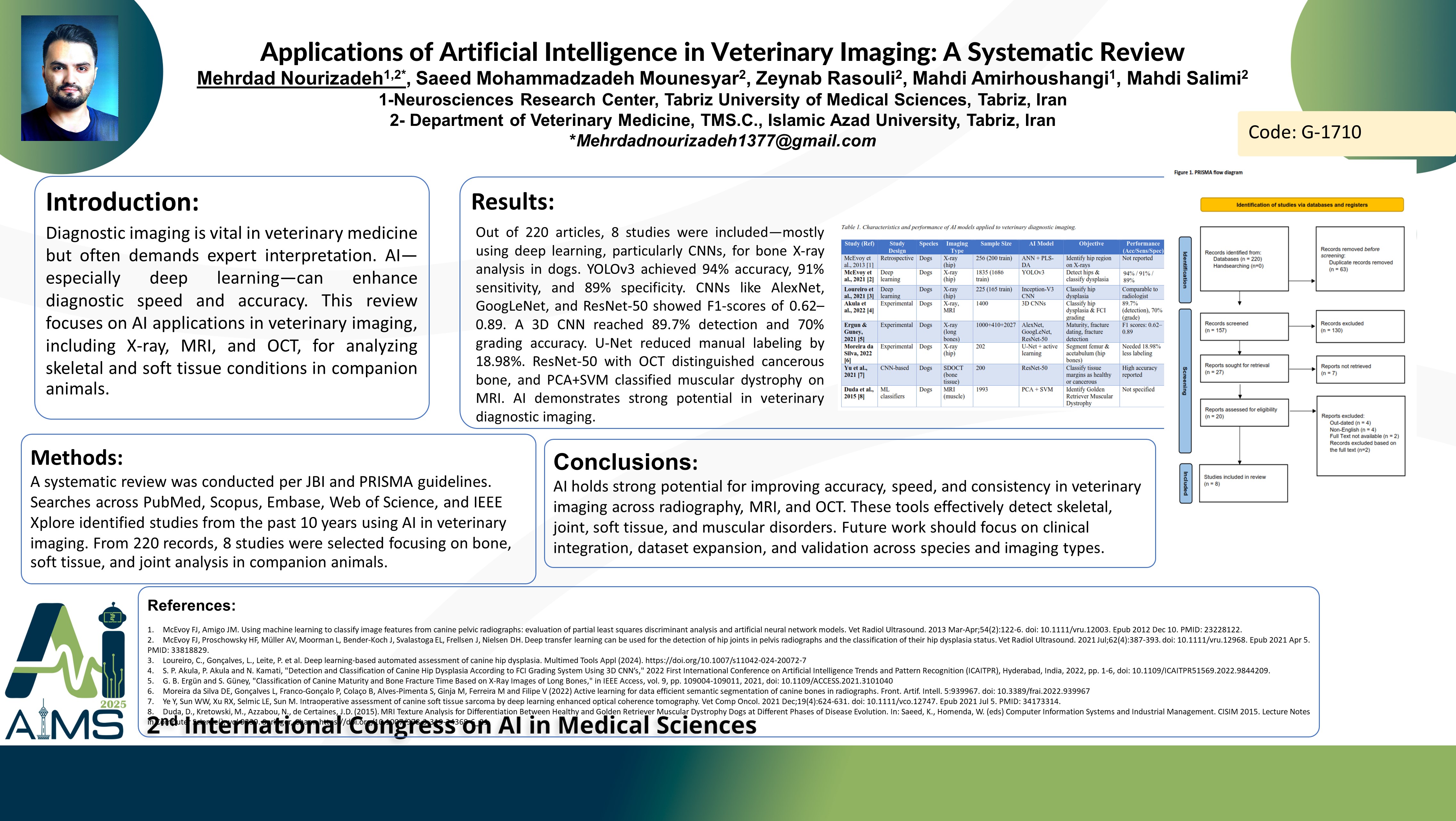Applications of Artificial Intelligence in Veterinary Imaging, A systematic Review
Code: G-1710
Authors: Mehrdad Nourizadeh * ℗, Saeed Mohammadzadeh Mounesyar, Zeynab Rasouli, Mehdi Amirhooshangi, Mahdi Salimi
Schedule: Not Scheduled!
Tag: Biomedical Signal Processing
Download: Download Poster
Abstract:
Abstract
Background and Aims: Diagnostic imaging is essential in veterinary medicine, allowing veterinarians to detect injuries and diseases through techniques like X-rays, ultrasound, MRI, and CT scans. However, accurately interpreting these images requires specialized expertise, which can be challenging and time-consuming. Artificial intelligence (AI) offers tools to improve diagnostic accuracy and efficiency. This review focuses on AI applications in analyzing bone radiographs, which are simpler and more consistent than complex imaging types like lung and heart ultrasounds. Method: This study followed JBI and PRISMA guidelines. A comprehensive search of PubMed, Scopus, Embase, and Web of Science databases was conducted for peer-reviewed studies published in the last five years. Relevant MeSH terms included “Artificial Intelligence,” “Deep Learning,” “Bone Imaging,” “Dogs,” “Cats,” and “Horses.” Studies specifically addressing AI analysis of bone X-rays were selected. Out of 220 screened articles, eight met the inclusion criteria. Results: From the 220 records, eight studies met the criteria. Most AI models were Convolutional Neural Networks (CNNs), demonstrating impressive accuracy in detecting fractures and joint abnormalities in bone radiographs, with accuracy rates reaching 94%, sensitivity at 91%, and specificity at 89%. Some studies also reported success in analyzing heart ultrasounds, identifying cardiomyopathy and valve defects with 90% accuracy, 88% sensitivity, and 87% specificity. Despite these advancements, challenges remain in standardization, data privacy, and practical integration of AI tools into clinical practice. Conclusion: Bone radiographs offer a promising application for AI due to their simplicity, clarity, and availability. AI tools enhance the detection of bone injuries and abnormalities more quickly and accurately than traditional methods. Future research should focus on refining models and expanding their application to larger datasets. AI systems have significant potential to assist veterinarians in providing more consistent and efficient diagnoses.
Keywords
Artificial Intelligence,Imaging,Bone Radiographs,Systematic Review,Deep Learning,Veterinary
